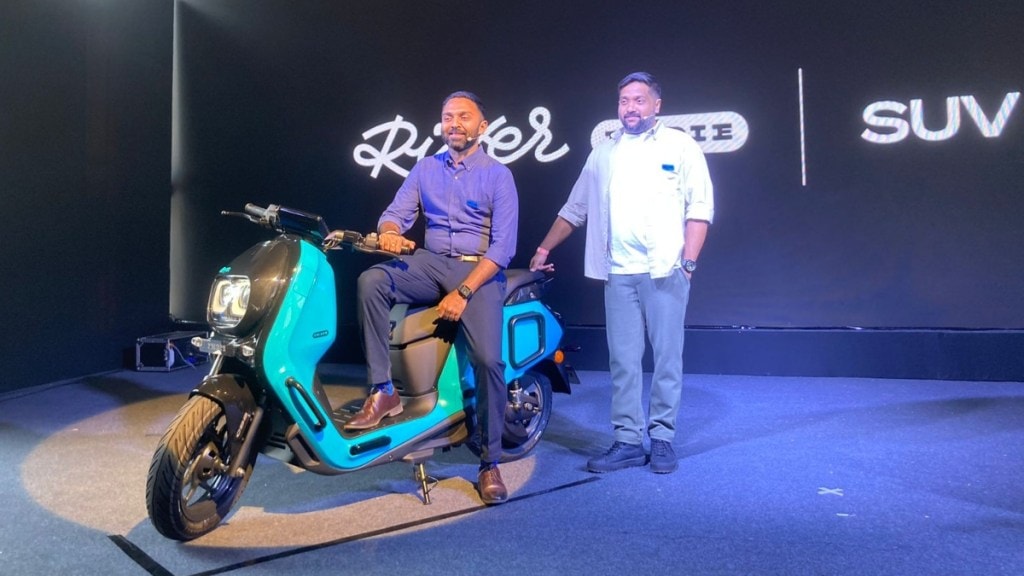Bengaluru-based green mobility start-up River, aims to change the electric vehicle game with its Indie e-scooter, which it claims is the SUV of the scooter segment. The company which had been under stealth since its inception almost three years ago, wants to make a humble start, but has surely got an aggressive target to sell 100,000 vehicles annually in the next three years.
Founded by Aravind Mani (CEO) and Vipin George (Chief Product Officer) in March 2020, the start-up has raised around $13 million (Rs 100 crore) till now from the likes of Chris Sacca’s Lowercarbon Capital, Toyota Ventures, Maniv Mobility and Trucks VC.
Unlike many other new-age start-ups, River claims to have worked extensively not only behind the e-scooter but also to time-to-market.
In a media interaction, Mani revealed that in addition to its R&D set-up it is also in advanced stages of setting up of its manufacturing facility in Hoskote, which will be able to produce 100,000 units per annum. It has also established key supply partnerships with Tier 1 companies such as Varroc (for lighting), MAHLE (motor), Gabrielle India and Advik Hi-Tech amongst others. Barring the cells, everything has been localised.
Why experience matters
For lot many start-ups moving from ideation to execution to business performance has been a key challenge. But in the case of River, the founders seemed to have started with a clear roadmap in their mind. Mani, an engineer has worked in the petrochemicals industry before he joined the automotive segment, where he worked with Ultraviollete Automotive as Vice-President for Business Strategy. While George, worked with Honda Motorcycle & Scooter India’s R&D wing for eight years, where he worked on several platforms such as Activa 3G, Navi, among others. He was elevated till the position of head designer before he joined Ultraviolette as Design Lead, and then went ahead to co-found River.
A quick chat with the duo confirms the equation. While George focuses on the product, Mani looks to take care of business. When queried about sales, Mani says the start-up is not looking to have unrealistic target, but instead aims to grow sustainably.
“In the first year, we would like to sell between 3,000-5,000 units; 30,000 – 36,000 units in 2024 and by 2025, we would like to sell 100,000 units per annum,” he adds.
This he says has got nothing to do with their manufacturing capabilities, but instead having realistic expectations and also going to the market with a proper business model. If things go as planned, River may start looking for new manufacturing facility, which could also possibly be located in some other state.
The start-up has grown from a small team of 85 people in March 2022, to a whooping 300-plus strong team, which includes around 240 people working on R&D.
Retail sales, expansion and future plans
Just like is the case with most Bengaluru-based EV start-ups, the first market where the e-scooter will be introduced is its homecity, followed by 3-4 more markets this year. By 2024, the company aims to have presence in 50 cities which will see a mix of Tier 1, 2 and 3 geographies.
The start-up is looking to ensure proper coverage in each key hubs it enters. When queried about aftersales, Mani stated that it is one important part of its business, which the start-up is extensively working on. It has already started working on creating training modules for its dealer partners to ensure proper aftersales service.
In terms of charging network, it will begin work on setting up its on fast-charging stations next year, which can charge the e-scooter from 0 to 80 percent in around an hour.
While India is an important and the biggest two-wheeler market, and River aims to only focus on domestic market for at least three years, beyond which it also has “ambition to go international”.
As part of its differentiation factor, it is also looking to introduce a host of accessories, starting with a few this year, and plans to have more than 50 different accessories for its e-scooter.
When queried about future products, George said that the start-up will focus on the two-wheeled form factor. The initial aim is to focus on Indie, but in the future it may be open to entering other segments.


















